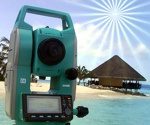

A recent Mortgage Finance Gazette article suggests that surveying and surveyors are in decline. “The future of the surveying profession has been a cause for concern for many years. Some surveyors contend that the surveying profession, in it’s current form, could be heading towards extinction,” the article said.
The evidence to support this observation is the average age of a surveyor (greater than 55). “Their reasons include a gradual decline in the number of qualified and licensed professionals, absence of the other traditional training route of the multi-disciplinary general surveying practice, impact of emerging technologies, sophisticated and more capable equipment, and a decline in the number of new graduates into the profession,” indicates the article.
Within those last few sentences is a clue to part of the problem. If we look around today we can find many non-professionals are employing high-accruacy positioning technologies. Total stations are robotic, thus able to make needed surveys in automated fashion.
Much of the survey technology related data finds it way into CAD-based programs as compared to geographic information systems (GIS) – along with limitations and integration issues with other spatial data. It can be disturbing to accept that surveyors are in decline, however, there is considerable evidence pointing toward high accuracy and precision adding value throughout architecture, utility, planning and development work flow chains.
The perception of what a surveyor does in 2011 is not well understood outside of the surveying community. While surveyors may understand the value and importance of their work (and I agree), non-surveyors do not understand the value of this work in easily identifiable and useful ways. To complicate matters more, some agricultural producers argue that they are being asked to buy surveying technologies, when they are agricultural professionals. Do we articulate the value of high quality accuracy and precision on the basis of agricultural values enough?
‘Facing the Challenge of the Shrinking, Aging Surveying Profession‘ – a report from the International Federation of Surveyors says, “the traditional surveying academic programs of the 1960s, 1970s, and 1980s are not sustainable with the current numbers of students seeking entry into the surveying profession.”
From my perspective, those surveyors who can deliver the value of accuracy and precision across work flows involving CAD, GIS, building design, housing, underground measurement within a wholly integrated framework will embrace all that industry and society ask for today.
